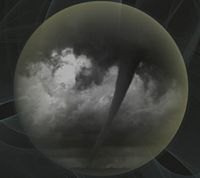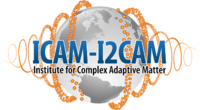PHZ3400: Phenomena in Condensed Matter - Spring 2011

Class Information
- Lectures: T R 2-3:15pm; HCB 207
- Professor: Vladimir Dobrosavljevic
- Office hours: Before class or by appointment
- Prerequisite: Calculus-based General Physics (PHY 2048 and 2049), and Modern Physics (PHY3101).
- TA Grader: TBA
- Tutor: TBA
- Midterm 1: Feb. 24 (easy)
- Midterm 2: Mar. 24 (harder)
- Final Exam: Apr. 25, 10am, HCB 207(perhaps not too hard)
Description
This is an upper-level undergraduate course, with the goal to explain the concepts of modern Condensed Matter Physics. In this class, special emphasis will be put on the concept of "Emergence" - the idea that systems consisting of many particles display fundamentally new phenomena, not found on the microscopic level. Examples of Emergence surround us at every step, but it is only recently that this important concept has started to be appreciated by the public at large. Serious efforts to disseminate these important ideas is being spearheaded - as we speak - by ICAM (Institute for Complex Adaptive Matter), a multi-institutional organization spanning five continents. The instructor for this class is the FSU representative at ICAM.
The key component of this course is the collaborative student contribution to the course Wiki-textbook. Each team of students is responsible for BOTH writing the assigned chapter AND editing chapters of others. Instead of writing traditional-style term papers, students will produce Wiki-contributions to various special topics, and then use these pages to present what they discovered to the class. Cross-linking these pages with the exponentially growing number of resources on the Web will produce a new generation of learning tools: a veritable revolution in teaching physics and science in general.
Textbooks
- Main texts:
- Soft Condensed Matter, by Richard A. L. Jones (Oxford University Press, 2007).
- Solid State Physics, by J. R. Hook and H. E. Hall (Wiley, 2007).
- Other useful texts:
- Principles of Condensed Matter Physics, by P. M. Chaikin, and T. C. Lubensky (Cambridge University Press, 2000).
- Solid State Physics, by N. W. Mermin and N. D. Ashcroft (Holt, Rinegart and Winston).
- Introduction to Solid State Physics, by C. Kittel (Wiley).
Class Materials
- Lecture Notes (Wiki-written by students!)
- Additional Materials (with pretty pictures)
Announcement
- Folks: I want everyone to make efforts to add to and enhance the existing pages and materials. Remember, a substantial portion of your grade depends on your efforts!
- A new capability within MediaWiki is the capability to embed YouTube and other video formats. Examples how to do this are provided on the bottom of the Main Page.
- I like the fact that some people are using the discussion tab to blog on a given page. But please add not only the date and the time of your comments, but also your name, as I did in answering some comments/questions.

